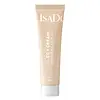What's inside
What's inside
 Key Ingredients
Key Ingredients

 Benefits
Benefits

 Concerns
Concerns

 Ingredients Side-by-side
Ingredients Side-by-side

Water
Skin ConditioningCyclopentasiloxane
EmollientDimethicone
EmollientC13-15 Alkane
SolventCyclohexasiloxane
EmollientEthylhexyl Methoxycinnamate
UV AbsorberDimethicone/Divinyldimethicone/Silsesquioxane Crosspolymer
HumectantMica
Cosmetic ColorantPolyglyceryl-4 Isostearate
EmulsifyingMagnesium Sulfate
Cetyl PEG/PPG-10/1 Dimethicone
EmulsifyingHexyl Laurate
EmollientPolysilicone-11
Butylene Glycol
HumectantVaccinium Vitis-Idaea Seed Oil
AntioxidantCalluna Vulgaris Flower Extract
Skin ConditioningPhenoxyethanol
PreservativeTrimethylsiloxysilicate
EmollientDisteardimonium Hectorite
StabilisingGlycerin
HumectantPolypropylsilsesquioxane
Aluminum Hydroxide
EmollientPropanediol
SolventPropylene Carbonate
SolventPentaerythrityl Tetra-Di-T-Butyl Hydroxyhydrocinnamate
AntioxidantMagnesium Stearate
Cosmetic ColorantEthylhexylglycerin
Skin ConditioningHydroxyapatite
AbrasiveTriethoxycaprylylsilane
Zinc Oxide
Cosmetic ColorantHelianthus Annuus Seed Oil
EmollientRosmarinus Officinalis Leaf Extract
AntimicrobialIron Oxides
CI 77891
Cosmetic ColorantWater, Cyclopentasiloxane, Dimethicone, C13-15 Alkane, Cyclohexasiloxane, Ethylhexyl Methoxycinnamate, Dimethicone/Divinyldimethicone/Silsesquioxane Crosspolymer, Mica, Polyglyceryl-4 Isostearate, Magnesium Sulfate, Cetyl PEG/PPG-10/1 Dimethicone, Hexyl Laurate, Polysilicone-11, Butylene Glycol, Vaccinium Vitis-Idaea Seed Oil, Calluna Vulgaris Flower Extract, Phenoxyethanol, Trimethylsiloxysilicate, Disteardimonium Hectorite, Glycerin, Polypropylsilsesquioxane, Aluminum Hydroxide, Propanediol, Propylene Carbonate, Pentaerythrityl Tetra-Di-T-Butyl Hydroxyhydrocinnamate, Magnesium Stearate, Ethylhexylglycerin, Hydroxyapatite, Triethoxycaprylylsilane, Zinc Oxide, Helianthus Annuus Seed Oil, Rosmarinus Officinalis Leaf Extract, Iron Oxides, CI 77891
Water
Skin ConditioningCoco-Caprylate/Caprate
EmollientIsododecane
EmollientEthylhexyl Methoxycinnamate
UV AbsorberTitanium Dioxide
Cosmetic ColorantButylene Glycol
HumectantTalc
AbrasiveIsononyl Isononanoate
EmollientCetyl PEG/PPG-10/1 Dimethicone
EmulsifyingDisteardimonium Hectorite
StabilisingBehenyl Dimethicone
Skin ConditioningPolyglyceryl-4 Isostearate
EmulsifyingPhenoxyethanol
PreservativeAlumina
AbrasiveSodium Dehydroacetate
PreservativeHydrogen Dimethicone
Simethicone
EmollientDisodium EDTA
Aluminum Hydroxide
EmollientXylitylglucoside
HumectantAnhydroxylitol
HumectantXylitol
HumectantTropolone
Skin ConditioningLactobacillus Ferment Lysate
Skin ConditioningGlucose
HumectantSodium Benzoate
MaskingPotassium Sorbate
PreservativeCI 77891
Cosmetic ColorantCI 77492
Cosmetic ColorantCI 77491
Cosmetic ColorantWater, Coco-Caprylate/Caprate, Isododecane, Ethylhexyl Methoxycinnamate, Titanium Dioxide, Butylene Glycol, Talc, Isononyl Isononanoate, Cetyl PEG/PPG-10/1 Dimethicone, Disteardimonium Hectorite, Behenyl Dimethicone, Polyglyceryl-4 Isostearate, Phenoxyethanol, Alumina, Sodium Dehydroacetate, Hydrogen Dimethicone, Simethicone, Disodium EDTA, Aluminum Hydroxide, Xylitylglucoside, Anhydroxylitol, Xylitol, Tropolone, Lactobacillus Ferment Lysate, Glucose, Sodium Benzoate, Potassium Sorbate, CI 77891, CI 77492, CI 77491
 Reviews
Reviews

Ingredients Explained
These ingredients are found in both products.
Ingredients higher up in an ingredient list are typically present in a larger amount.
Aluminum Hydroxide is a form of aluminum. It can be naturally found in nature as the mineral gibbsite. In cosmetics, Aluminum Hydroxide is used as a colorant, pH adjuster, and absorbent.
As a colorant, Aluminum Hydroxide may add opacity, or reduce the transparency. Aluminum hydroxide is contains both basic and acidic properties.
According to manufacturers, this ingredient is an emollient and humectant. This means it helps hydrate the skin.
In medicine, this ingredient is used to help relieve heartburn and help heal ulcers.
There is currently no credible scientific evidence linking aluminum hydroxide in cosmetics to increased cancer risk.
Major health organizations allow the use of aluminum hydroxide in personal care products and have not flagged it as a carcinogenic risk at typical usage levels.
Learn more about Aluminum HydroxideButylene Glycol (or BG) is used within cosmetic products for a few different reasons:
Overall, Butylene Glycol is a safe and well-rounded ingredient that works well with other ingredients.
Though this ingredient works well with most skin types, some people with sensitive skin may experience a reaction such as allergic rashes, closed comedones, or itchiness.
Learn more about Butylene GlycolThis ingredient is a high molecular weight silicone. It has emulsifying and skin conditioning properties.
Ci 77891 is a white pigment from Titanium dioxide. It is naturally found in minerals such as rutile and ilmenite.
It's main function is to add a white color to cosmetics. It can also be mixed with other colors to create different shades.
Ci 77891 is commonly found in sunscreens due to its ability to block UV rays.
Learn more about CI 77891Disteardimonium Hectorite comes from the clay mineral named hectorite. It is used to add thickness to a product.
It can also help stabilize a product by helping to disperse other ingredients.
Hectorite is a rare, white clay mineral.
Learn more about Disteardimonium HectoriteEthylhexyl Methoxycinnamate is an organic compound that provides UVB protection. It often goes by the more common name of octinoxate. It is created from methoxycinnamic acid and 2-ethylhexanol.
Ethylhexyl Methoxycinnamate absorbs UVB rays with wavelengths between 280-320 nm. UV absorbers protect your skin by using chemical reactions to convert UV rays into heat and energy.
UVB (290-320 nm) rays emit more energy than UVA rays. They are capable of damaging DNA, causing sunburns and are thought to be linked to skin cancer.
The state of Hawaii has banned sunscreens containing octinoxate due to its potential impact on coral reefs. More research is needed to bridge gaps in this research. The European Union allows higher levels of octinoxate in sunscreens than the US and Australia.
Ethylhexyl Methoxycinnamate is oil soluble. It is not stable and may lose efficacy when exposed to sunlight.
Learn more about Ethylhexyl MethoxycinnamatePhenoxyethanol is a preservative that has germicide, antimicrobial, and aromatic properties. Studies show that phenoxyethanol can prevent microbial growth. By itself, it has a scent that is similar to that of a rose.
It's often used in formulations along with Caprylyl Glycol to preserve the shelf life of products.
This ingredient is an emulsifer and stabilizer. It comes from isostearic acid and polyglycerin.
As an emulsifier, it helps blend oil and water to improve texture, spreadbility, and application.
Due to it being derived from isostearic acid, this ingredient may not be fungal acne safe.
Learn more about Polyglyceryl-4 IsostearateWater. It's the most common cosmetic ingredient of all. You'll usually see it at the top of ingredient lists, meaning that it makes up the largest part of the product.
So why is it so popular? Water most often acts as a solvent - this means that it helps dissolve other ingredients into the formulation.
You'll also recognize water as that liquid we all need to stay alive. If you see this, drink a glass of water. Stay hydrated!
Learn more about Water